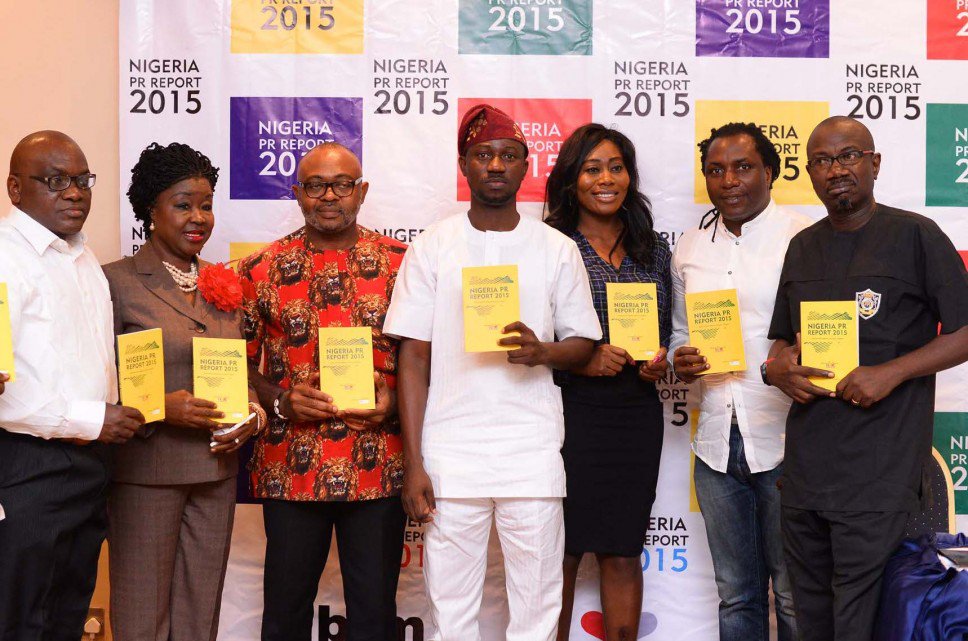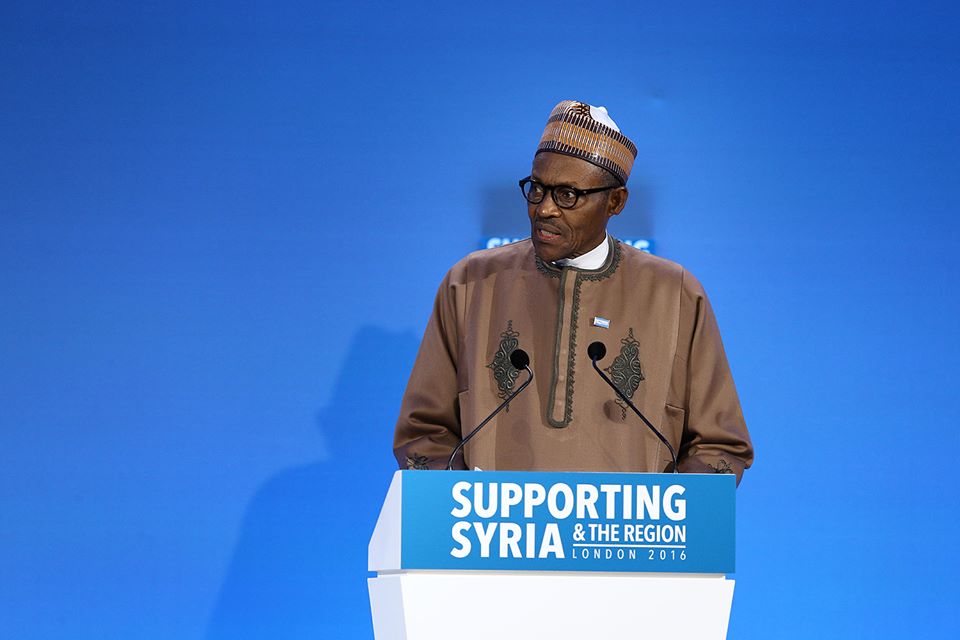Two unrelated incidents conspired to compel me to eventually make this intervention, which I have been planning forever. One was a personal experience a professional colleague shared with me, recently-a story that touches the heart, in a manner of speaking. After a recent event, he lamented, his Managing Director received a Google Alert barely an hour after, showing a report of the event by an online publication generously illustrated with photographs, but rather than compliment his effort, the boss derided and dismissed the report saying he would rather it appeared “on the front page of the prominent national dailies than be hidden in an obscure publication online.” Wow!
The other incident was the launch by BlackHouse Media, a Public Relations company, of the first ever Nigeria PR Report inspired by the founder and CEO of BHM, Ayeni Adekunle. At the BHM event, the panelists and indeed the audience raised several issues of interest, which I solemnly believe were (are) crucial, if not everything, to the practice of Public Relations. I will return to these events presently, as I seek to highlight some of the key issues that are driving the new paradigm in public relations practice in Nigeria, from my perspective as a practitioner in one of the more active sectors of the economy, Telecommunications.
Identity crises: I am of the opinion that Public Relations industry in Nigeria is facing an identity crisis, and this hasn’t got everything to do with the moribund existence of the Nigeria Institute of Public Relations (NIPR), but with the obvious lack of certainty of what professionally constitutes Public Relations. At the BHM event, Mr. Yomi Badejo-Okusanya, Chief Executive Officer of CMC-Connect and one of the more successful practitioners in the industry, decried how Experiential Marketing, Below the Line (BTL) Activations and Events Management were painfully excised from their business. Badejo-Okusanya’s lamentation lent credence to my position that the industry needs to define or redefine the content or components of the business. We cannot be into everything and still expect to be accorded respect as professionals.
Public Relations, based on my experience, should focus on communication, perception and reputation management without dabbling into the more mundane details of organizing events and producing calendars, diaries, Christmas hampers and “killing” stories in the media (a task made extremely difficult, if not impossible with social media and citizen journalism). The question here really is: What is PR and what is NOT. Or who are we and what do we really do? When will the Nigeria Institute of Public Relations (NIPR) cease to be an arm of the Federal Ministry of Information? Can PRCAN and IABC jointly champion the birthing of another institute that will be truly professional and devoid of government inference and control?
Advertisement
Content creation and Story-telling: These are two important elements of Public Relation, which seem to have climbed out of the back burner, perhaps with a gentle nudge from the burgeoning advent of social media. The communication aspect of Public Relations is purposive, that is, communication with a purpose. There might be no communication without a purpose, but the true defining characteristic of this form is the clear objectification, which is pursued logically and then measured, at the end of the day. Story-telling simply means bringing the functionality of your product or service or even idea to the consumer in a tangible, demonstrative manner. For instance, a video or article on how a customer has used and benefitted from Airtel’s SmartTrybe detailing the functionalities and benefits is a good story to tell, and should be told often by PR practitioner managing Airtel Nigeria. In other words, the PR practitioner, and not the media, should lead and drive the narrative of every sensible organization.
There are, however, some lamentable limitations, which are militating against the creation of good quality content and effective use of story-telling as PR tools. One, lamentably, is the paucity of skills, good writing skills on the part of the practitioners, and the other is a lack of interest in reading by customers as against the keen interest in deals, promos and freebies (which, on face value, are by no means illegal). The solutions are as simple as the problems are complex. Practitioners must go back to the basics. One of the core competencies of a good PR professional is good writing skills, which is powered by reading and a sharp analytical mind. You cannot give what you do not have. Consequently, the customers or the audience, if you like, can then easily be segmented by an intelligent practitioner and messages designed and targeted to appeal to them, in their comfort zones. Communication has long evolved from the Hypodermic Needle Theory, where every message, like an injection or the traffic light is supposed to elicit similar reactions, to Berelson’s Catch All Law, where some kinds of communication, when brought to the attention of some people through some kinds of mediums will elicit some kinds of responses. Enter social media.
Digital and Social Media: I cannot resist the temptation of saying that my friend’s boss, whom I mentioned in my opening lines, is not in tune with current trends. He is still analogue and needs to be converted very quickly. The conundrum in his ignorant comment was that the online publication rather than his old school hard copy newspaper will give him the mileage he has spent the organization’s scarce resources for.
Advertisement
There are few questions to be asked here. How many people buy the so called newspapers? What are the print run or circulation figures of the newspapers? What is the pass on rate of those publications? In other words, how many people read the newspapers as against the millions who own smart phones and are more often than not connected to the internet and, therefore, follow online publications? You cannot compare the potentials inherent in the 94m internet subscribers for mobile GSM (according to the latest Nigeria Communications Commission figures) to those of the paltry 1m (or even less) aggregate circulation of the traditional publications. The latter is even less, if you discount for unsold copies. As a matter of fact, many would rather invest in buying more gigabytes to browse the internet and consume the social media than buy a hardcopy publication. Now, this is not to say that those hardcopy publications are not relevant, but they offer far less eye balls than the social media and are, therefore, more effective.
Talking about digital and social media, the number of subscribers to Facebook, Twitter, WhatsApp and Instagram, to mention a few, are growing exponentially. When you juxtapose these numbers with the massive demographics of an active youth population, which accounts for over 60 per cent of the population or more, then you will understand why you can only ignore the social media at your own peril. Perhaps, the crucial thing here is developing a strategy for engaging the over 150m Nigerians, especially the youth segment, via social media. In my former life at Cadbury Nigeria, we got occasional feedback from customers through letters from the post office, face-to-face encounters during market visits and complaints by customers who graciously take the pain to return bad products. I used the word graciously instructively because I believe that in those days of zero or little feedback, it took serious effort and customer loyalty to bring a defective product to the notice of a manufacturer. Today, a customer with access to data will share the experience plus photos on social media and allow the manufacturer to do the chasing. I should know this!
I must hasten to add that most of the traditional media, including television and radio stations have also established online presence, with varying degrees of perfection. So, there you have it; some extra opportunities for telling your stories and driving your narrative. Have you checked the volume of feedback that come with online stories, especially with the traditional media, say The Punch, ThisDay, The Guardian, Vanguard, Channels TV and AIT? Massive! And massive communication opportunities too! It is such a conundrum that a platform which gives us so much opportunity to tell our story and sell our products is equally a veritable weapon of mass destruction. Talk about the law of unity and conflict of opposites!
PR as a Management Function: Most definitions of Public Relations enthusiastically claim it is a Management Function. Perhaps, this is only practiced in the breach. But for a few organizations like mine, the Public Relations functions are sequestered in either the Legal or Human Resources or Marketing Departments. Let me share a personal story: When GSM was launched back in 2001, I hoped and prayed to be part of the revolution. So, it was with open hands I accepted invitations to interview at both MTN and Econet, as it used to be known then. When I checked, the PR department at MTN was a part of the Marketing function, while that of Econet was part of the Executive (CEO’s). I prayed more for the latter – for two reasons. That was the model I was used to from Cadbury Nigeria, where I worked, and, secondly, it was in synch with the textbook definition of PR as a management function. You cannot be a management function, when you are not part of senior management or executive management, as the case may be.
Advertisement
Thankfully, my prayer was answered. MTN rejected me (in a manner of speaking) and Econet hired me, and the rest, as they say, is now history. Today, as Director of Corporate Communications & CSR, I sit in the Executive Management of the organization, where I participate actively in the leadership roles and responsibilities-looking after Public Relations (including online PR), Internal Communications and Corporate Social Responsibility (CSR). Now, that is the classical model and indeed the way it should be. Here, like other leaders in the organization, you get a helicopter view of the business and contribute from your perspective as a business executive managing communication and reputation.
Budgets: Corollary to being a management function is having a budget line strictly dedicated to Public Relations. In most organizations, the budget still sits elsewhere leaving the function at the mercy or whims and caprices of the budget owner. As a matter of fact, most organizations see Public Relations as a cost centre and not revenue centre-understandably. I say understandably because PR doesn’t generate funds directly. Even in our line of business, we struggle to bring in customers, even if we try. However, the impact of what we do helps to not only retain the customer we have but also encourage new ones to come on board. This is what most PR practitioners have failed woefully to demonstrate to their employers or clients. How do we justify the meager budget we get? And indeed the budgets are meager compared to Marketing, for instance. After all, they will tell you, PR is prayed for and not paid for. Well, that is not exactly the case in reality. Many things are certainly paid for in PR but not news-and that is a subject I want to deal with presently.
Data and Measurement: I call him “Ayeni The Great” and indeed Adekunle Ayeni is a great man. He is bold and courageous, and regardless of the limitations and imperfections of his Nigeria PR Report, he has clearly set the agenda for record-keeping, data collection and impact assessment of PR activities. This has been a huge lacuna in the industry. How do we justify our budget? How do we even justify our work and the attendant pay? How do we demonstrate the impact of our work? How do we measure our work? The first lesson in Research Methodology is: What cannot be measured should not be done. One of the banes of PR practice globally is the proclivity to compare its work and effect with marketing. That is clearly defeatist, firstly, and downright laziness, secondly. Public Relations must do away with comparing its output with advertising column inches. In fact, it must move from output to outcome. Several research methodologies are available to serious-minded professional to demonstrate outcome and impact. Additionally, Public Relations practitioners should start making informed commentary and intellectual interventions through lectures, presentations and publications to deepen the knowledge base and provide ready resources for reference by professionals and intending practitioners. Ayeni, with his book, has broken the jinx, which, hopefully, will spurn a rack of other similar, even better interventions.
Brown Envelope: As far as I am concerned, this is a most embarrassing topic to discuss, but I will discuss it. An age-long practice of inducing journalists to report an organization or client positively or to use its press releases, it has regrettably defined the relationship between Public Relations practitioners and their friends in the media. So, the question one is compelled to ask is: Where is the love? Where is the so called goodwill which PR practitioners seek to “build and sustain” between their organizations and stakeholders? There are serious ethical issues surrounding this behavior and any dialogue on the legality or illegality of it confers a status of importance to the aberration. My position is NO! It is unprofessional to give an envelope, whether brown or white to a journalist-and I am sad some practitioners stood up to defend or justify it and described it as transport facilitation, etc. NO sir! Even the use of phone recharge cards, airtime or other products, which some of us in the telecommunications industry (and even some outside of it) is unethical, because the objective is to “induce” or “motivate” journalist to report your activity or use your material. Why would I be bothered about whether a journalist made a call or not, sent an email or not or posted a photo or not, if it is not inducement? In the civilized world, samples are returned after the trial period for products like mobile phones, laptops, televisions, cars, etc, or the reporters are made to pay a book value for them. In Nigeria, it is seen as a right, which unfortunately reflects the Entitlement Culture prevalent in Nigeria.
To me, Brown Envelope is ethically, legally and morally wrong. Journalists are paid to do the job they do. I can even tolerate Christmas, wedding, birthday and anniversary gifts (which, inexplicably, disappear once a journalist leaves a relevant beat), but to assure journalists of “transport facilitation” or to encourage the use of a report by any other means than a good copy is reprehensible both for the giver and the taker. This is an issue the Institute should be punishing people for, were it really in existence.
Advertisement
The Future of PR: Regardless of the sustained efforts of charlatans and the inclement economic environment, Public Relations still boast a bright future. The rise in consumerism with the full complement of social media has opened a new vista for PR to flourish. People or organizations, who have products, services or ideas to sell to an increasingly incredulous, highly fastidious and very vocal and technologically empowered population surely need astute public relations people to help them tell their stories and manage their narratives strategically. We have gone past wondering what people were doing with their feedback and opinions before now. They are really dishing them out now, and whether you like it or not, the behavior is fast assuming the attributes of a culture, a culture of social protest, vehemence or retort, if you will. For instance, managing the reputation of the leading opposition party, the People’s Democratic Party (PDP), will be one hell of a job and very rewarding too-probably not in pecuniary terms, but who knows! The 2015 presidential election clearly illustrates how much public relations can influence social conversation which in turn influences behavior change-as exemplified by the change of the Buhari narrative from pre-2014 to what it became from late 2014 to the time he was ultimately elected in April 2015.
If there was ever a time public relations should get its mojo back, it is now with the growing social disquiet, confounding economic uncertainty and complicated political manipulations-all needing the professional intervention of PR practitioners, not charlatans.
Advertisement
Oparah is director, corporate communications & CSR, Airtel Nigeria.
Advertisement
Views expressed by contributors are strictly personal and not of TheCable.
7 comments






Inspiring and highly enlightening write up.
Would make sure my colleagues at the UNN PG SCH (PR),Enugu Campus, read this.
Thanks a big lot.
misconceptions of PR is what people take to be Profession PR .PR isn’t all about good looks ,annual parties,salary bonuses and so on and so forth .PR as explained by the British Institute of Public Relation is said to be a deliberate planned and sustained effort to establish and maintain mutual understanding between an organization and the public. An organization beings to have problems when its other branches refuse to honor the corporate image of the organization then the issue of multiple image become a barrier to good PR . a good PR should tell its public the truth and not rely on propaganda which involves the telling of deliberate lies to the public.PR as a management function in my own understanding can be said to mean the aspect of PR that bridges the gap between the organization and the public,hence PR is fit to be called a proper management function.the future of PR will be jeopardized if PR practitioners continue to collect white or brown envelope because even when you gather information about a certain gathering,organization etc even if it is okay you as a reporter will want to make it front page worthy hence which will be partial.others may say the money collected is for the transport fare but no matter what a brown envelope is a bribe and there is no other meaning I see that explains it . In general the issue of profession PR sholud be taken serious by the NIPR because even the government needs a good pr and if their PR is not good the people would not support them. Adedeji Moyosoreoluwa of Caleb University ,Imota,Ikorodu.100 level department of mass communication
Your comment..well public relation is not how you talk to people but
how u talk with them. Because 2ru that u can get to knw their minds and wat d want to offer, u can also learn new ideas from it, because it is also idea shared
what are the challanges of public relation in nigeria
the challenges of public relation in nigeria.
public relation is a universal concept and everyone uses its principles and methods every now and then if only amaturely.Everybody has opinion about what it is and what it is not,most people have that misconception that public relation is all about goodwill, fine appearance, free gifts,annual gift nd so on,but public relation is not all about that. Public relation as defined in 1978 world assembly of p.r in mexico city”is an art or social science of analysing trends,predicting their consequences, counselling organization leaders and implementing planned programs or actions which will serve both the organization and the public interest. A good p.r practitioner should have a good skill in writing and should be able to have a good idea in creating a story which will draw the attention of the public, it is well known and vivid to all that we are in the modern day and most people who are educated prefer to read news online or through the social Media than the print media. To my understanding public relation is a process of providing information to the public in order to present a specific view of a product or organization, public relation differs from advertising in that it is less obtrusive, and aimed at providing a more comprehensive opinion to a large audience in order to shape public opinion. Receiving brown envelope can bring about the downfall of a practitioner, practitioners are suppose to be honest and truthful so as to promote public relation, but if practitioners still collect brown envelope then public relation practitioners will not be trusted and the future of public relation will be jeopardised.
kofoworola Hanna
mass communication
Caleb university
Please, I’m writing on the assessment of public relations practice in Nigeria. Can anyone here help me with more info? Thanks